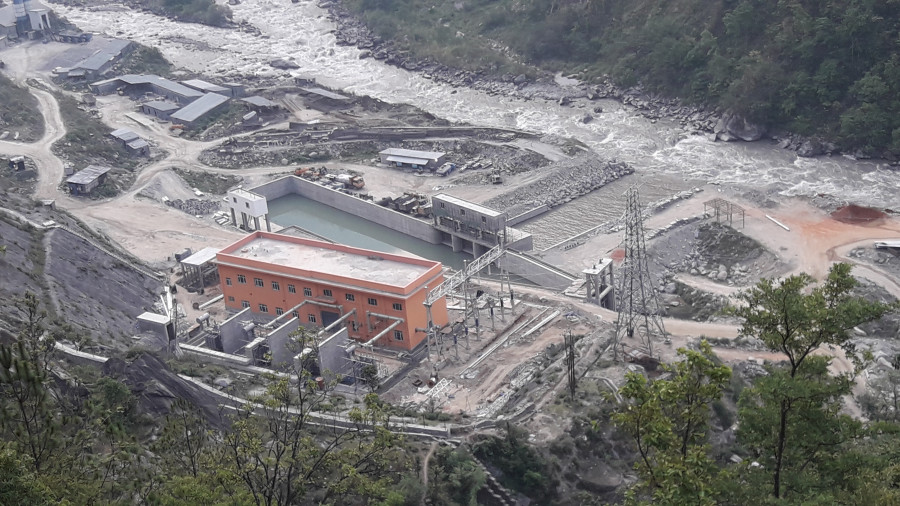Money
Upper Trishuli 3A hydropower plant ready to go full throttle
The scheme is expected to ease electrical stress in Kathmandu during peak hours.
Prahlad Rijal
In a final trial run, the Upper Trishuli 3A hydropower plant has started injecting 60 megawatts into the national grid upon completion of construction work at the project site in Rasuwa and Nuwakot districts.
According to project officials, the power generated by its second turbine was synchronised with the grid on Wednesday, two months after one of its turbines roared into life.
“After running a trial for a few days, the project will shut down the turbines and carry out the final phase of performance tests, load assessments and tunnel monitoring,” said Phadindra Joshi, project chief. “The plant is expected to go into full commercial operation within August.”
Initially, project officials had planned to commission both units of the plant in June, but the scheme faced a setback owing to labour visa issues. The issues were resolved in the first week of July, allowing work to resume.
The plant’s capacity to churn out 75 percent of its output even in the dry season makes it a scheme with higher economic value compared to other run-of-the-river hydropower projects in Nepal.
The scheme, the largest to come into operation this year, is expected to ease electrical stress in Kathmandu during peak hours besides allowing the Nepal Electricity Authority to save water in the Kulekhani reservoir for contingencies.
“The load centre is near Kathmandu, and the addition of 60 megawatts from the plant will help us to resolve power fluctuations and reliably balance demand-supply in the Valley,” said Kulman Ghising, managing director of the state-owned power utility.
Apart from improving system reliability, the scheme will also help the power utility to reduce energy imports from India during the dry season, saving millions.
Officials say that completion of a 45-km-long 220 kV Trishuli-Kathmandu transmission line as an alternative to the existing Hetauda-Kulekhani-Syuchatar setup provides a crucial infrastructure also for other hydel plants on the Trishuli River to transmit regular power via the Matatirtha substation to the Capital where energy demand is the highest at around 450 megawatts.
The Nepal Electricity Authority built the project and the power lines with a concessional loan of $114.7 million from the Export-Import Bank of China. The interest rate on the loan is 1.75 percent, and the repayment period is 20 years starting from the date of commercial operation.
Initially, authorities had planned to finish the project in 2014. But the project faced multiple setbacks. It sank into uncertainty after the contractor, China Gezhouba Group Company, halted work citing heavy damage to the access road and dam during the 2015 earthquake. Work resumed in 2017 after a two-year hiatus.
***
What do you think?
Dear reader, we’d like to hear from you. We regularly publish letters to the editor on contemporary issues or direct responses to something the Post has recently published. Please send your letters to [email protected] with "Letter to the Editor" in the subject line. Please include your name, location, and a contact address so one of our editors can reach out to you.




 5.44°C Kathmandu
5.44°C Kathmandu















